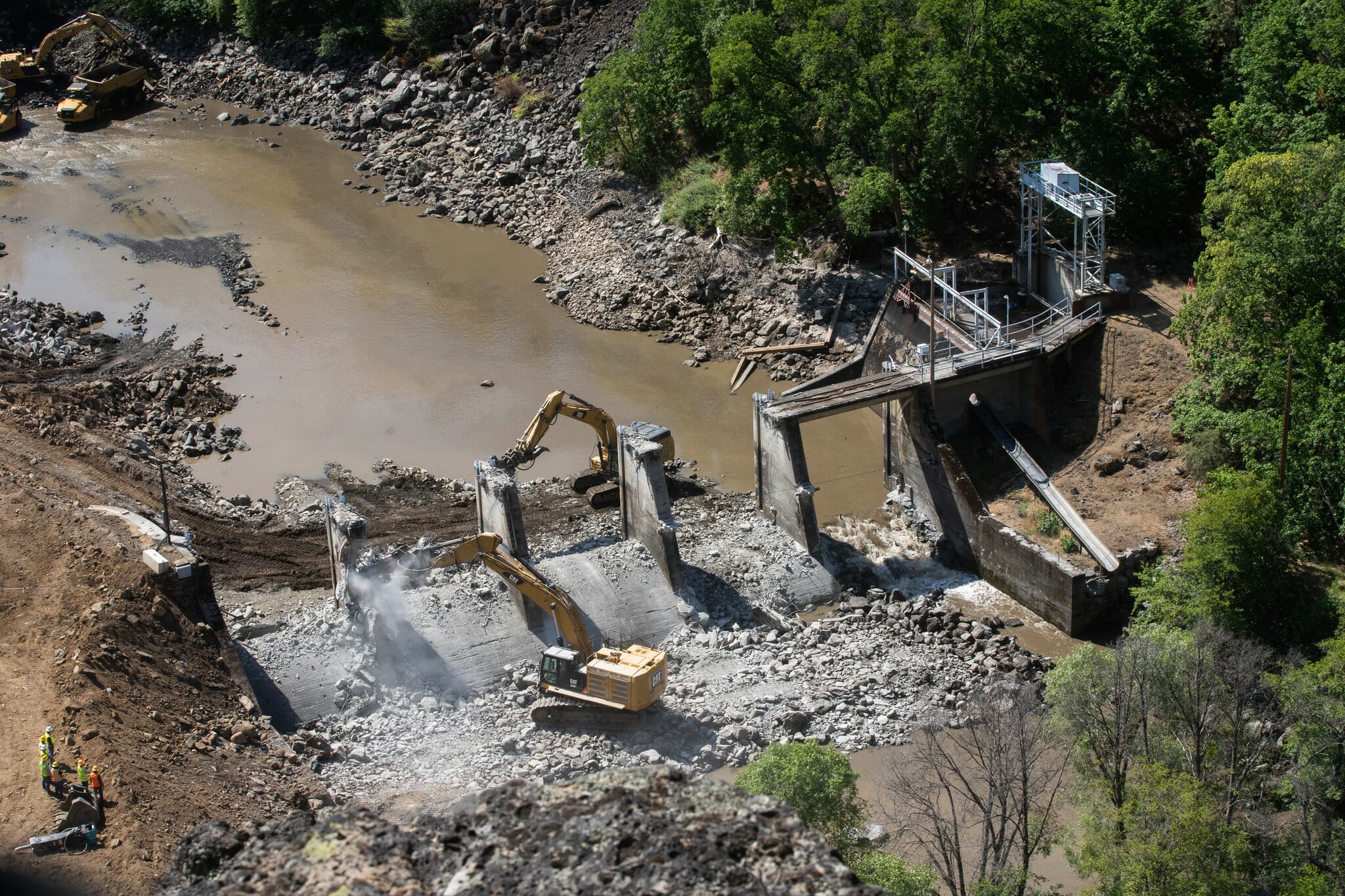All four dams of the Lower Klamath Project will be gone by the end of 2024.
The Copco II dam on the Klamath River was only 35 feet high. With the three other dams of the Lower Klamath Hydroelectric Project, however, it completely blocked fish passage and effectively cut the Klamath River in half, decimating the Klamath’s legendary salmon and steelhead runs.
Now, thanks to decades of never-say-die advocacy from Tribes, TU and other conservation organizations, and fishing groups, Copco II is largely gone.
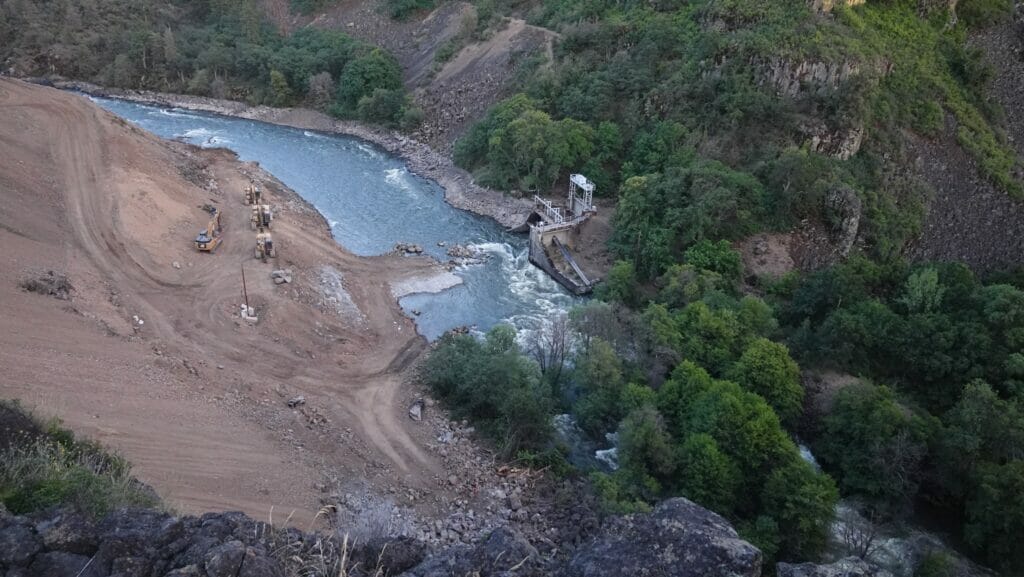
The first chunk of concrete parted company from the main wall of Copco II on June 22. In short order, most of the dam was converted to rubble. Into the space it had filled came waves of pent-up emotion from longtime advocates for river renewal.
By the end of next year, all four dams of the Lower Klamath Project will be completely removed. Salmon and steelhead will once again be able to reach nearly 400 miles of historic spawning and rearing habitat in this remarkable watershed. In the late summer of 2025, we could see the first waves of returning salmon.
Only a few companies are involved in the physical work of taking out the Klamath dams and restoring the project area. The Klamath River Renewal Corporation (KRRC), a non-profit organization created solely to take over ownership of the Project and decommission its dams, is overseeing this historic effort. The KRRC has contracted with the Kiewit Corporation to perform actual removal of the dams, and with Resource Environmental Solutions to handle river restoration.
A lot more entities were involved in getting us to this point.
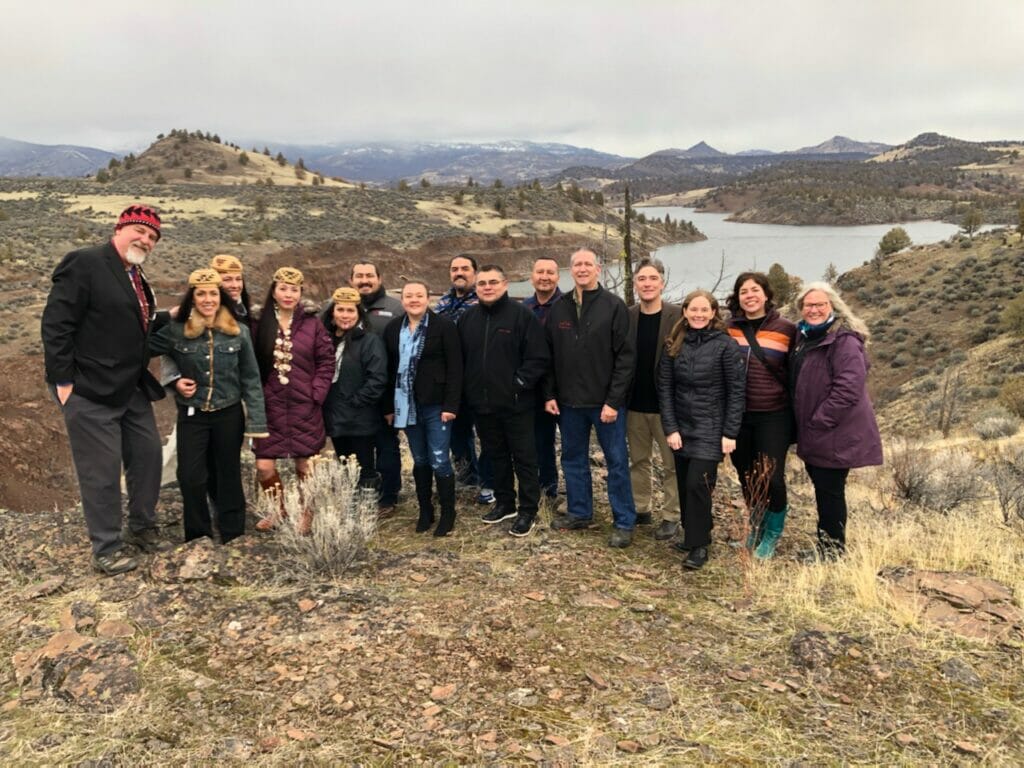
The most enduring, effective coalition
The tribes of the Klamath River basin have been a driving force in restoring the Klamath River. Their activism was spurred by a massive fish kill in the Klamath in 2002, when at least 30,000 salmon died from disease propagated by low flows and too-warm water – one of the biggest fish kills in American history – and the ability of the tribes to harvest salmon, even for ceremonial purposes, was curtailed.
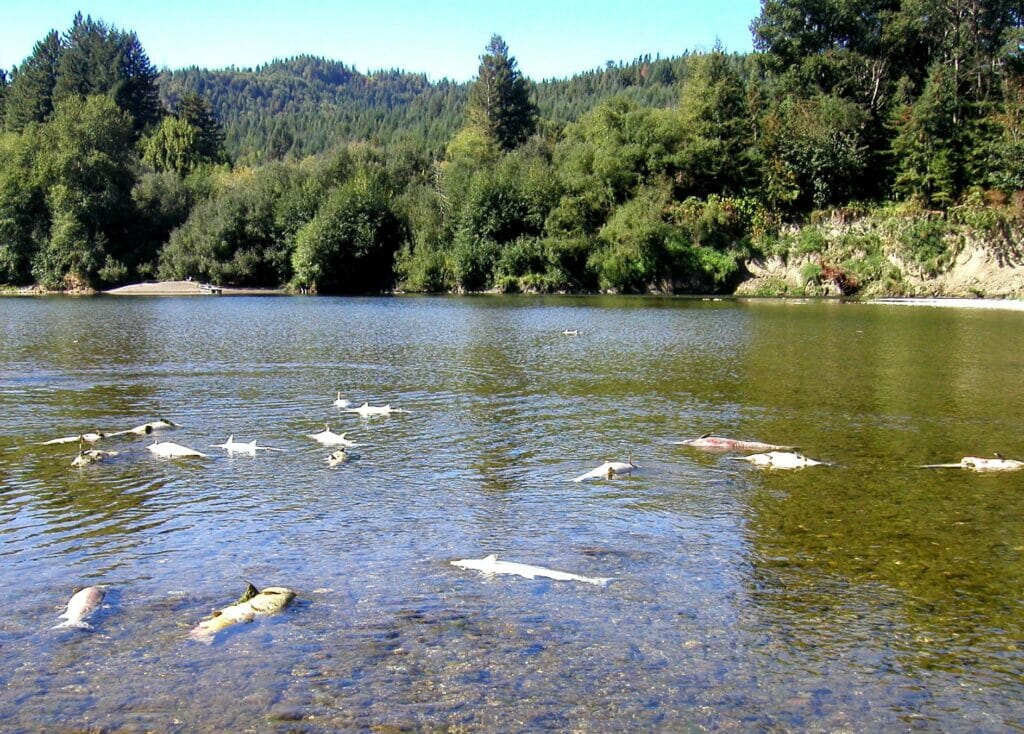
The tribes committed themselves to changing the downward trajectory of the Klamath’s legendary fisheries and joined forces with TU and other conservation and fishing groups as well as federal scientists in a trial in 2006 over the need for fish passage to be a requirement for relicensing the Lower Klamath Project.
Brian Johnson, director of TU’s work in California and current president of the board of the KRRC, says “The trial was the moment that the Tribal Nations, and the conservation nonprofits working towards dam removal, got to know each other and started working well together [in what] has become the most enduring, effective, and highest-functioning coalition of tribes and nonprofits I’ve ever seen.”
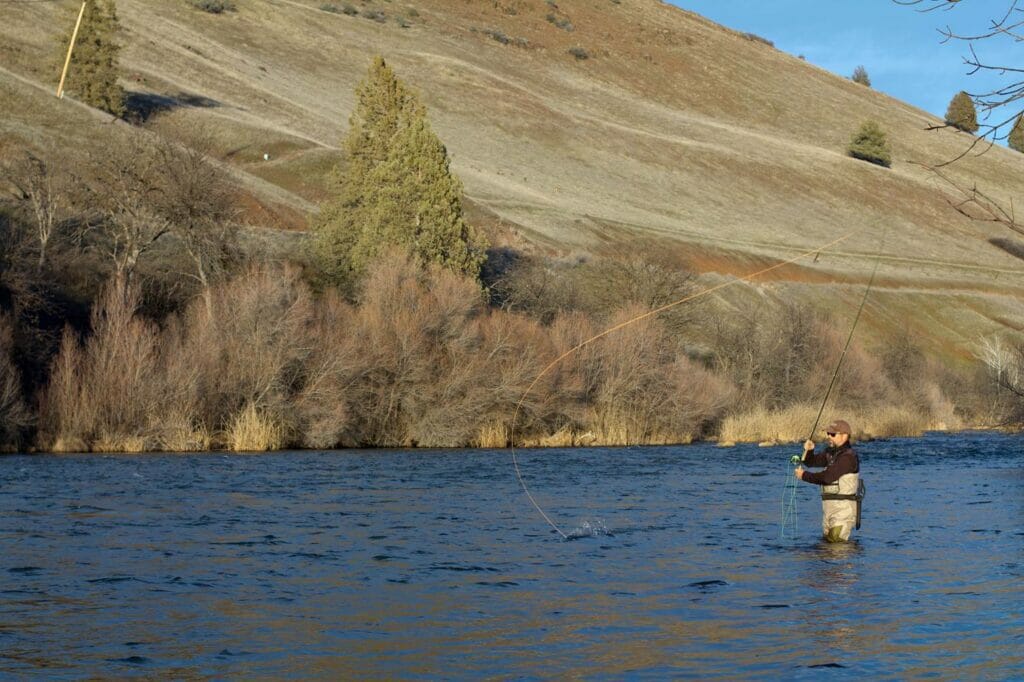
Restoring the full function of a river requires more than just removing blockages. While Johnson and his TU predecessor Chuck Bonham, now director of the California Department of Fish and Wildlife, were helping navigate the difficult path to dam removal, TU staff in Oregon worked equally hard to improve water quality, fish passage and habitat conditions in the upper Klamath basin, preparing for the return of salmon and steelhead.
Chrysten Rivard, director of TU’s work in Oregon, and Nell Scott, manager of TU’s Upper Klamath Restoration Program, have led this effort. Much of their work has been in partnership with ranchers and landowners, in smaller tributaries to Klamath Lake as well as in the Wood and Sycan Rivers – two of the three main feeders into the lake and host to incredible fisheries of lake-run native redband trout. Their restoration work will now expand into the “reservoir reach,” that portion of the river bracketed by the dams and the reservoirs behind them for over a century.
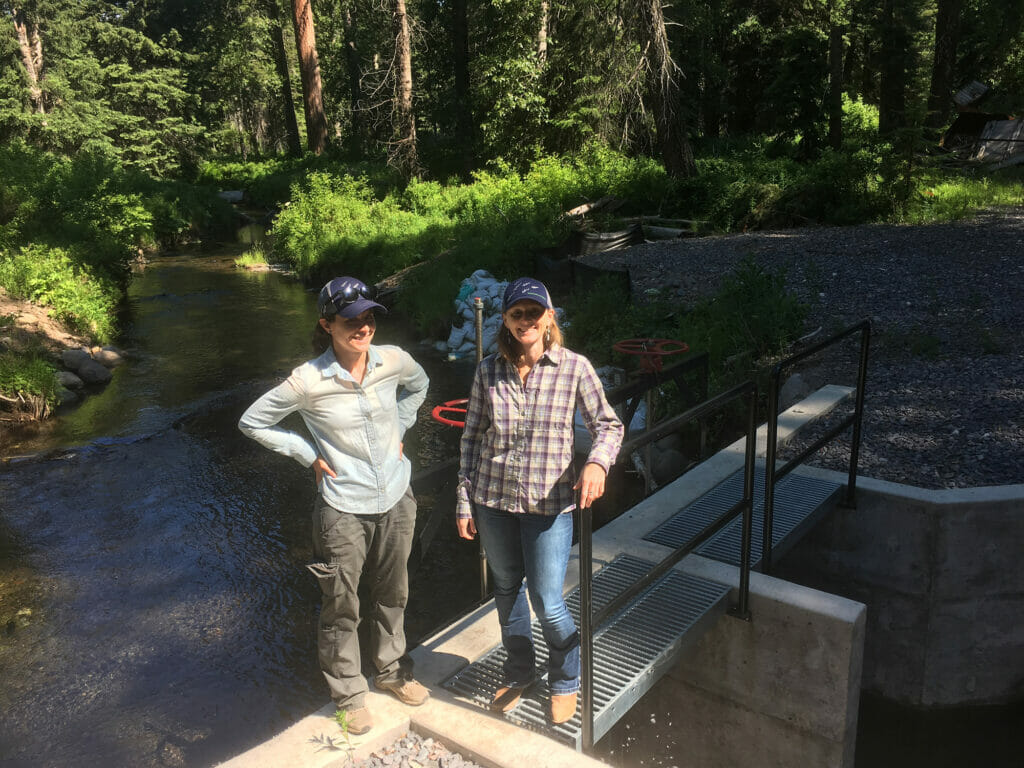
More recently, Scott’s program has been working with state and federal agencies to test the behavior of spring-run Chinook salmon as they return to the upper basin. And Scott’s crew has done such successful work with replicating the function of beavers on the landscape that segments of streams they’ve restored were dramatically less impacted by massive wildfires in the past few years.
Fishing in the reconnected Klamath
As the dams come down and the river reopens for sea-run fishes, TU is also working to sustain fishing opportunities without compromising recovery of salmon and steelhead in the Klamath basin. This spring, TU’s Oregon team provided input on updated angling regulations for the river from the California-Oregon border to Klamath Lake. In August 2023, we expect Oregon to adopt regulations that protect out-migrating smolts and returning adult fish, while keeping the river open to recreational angling.
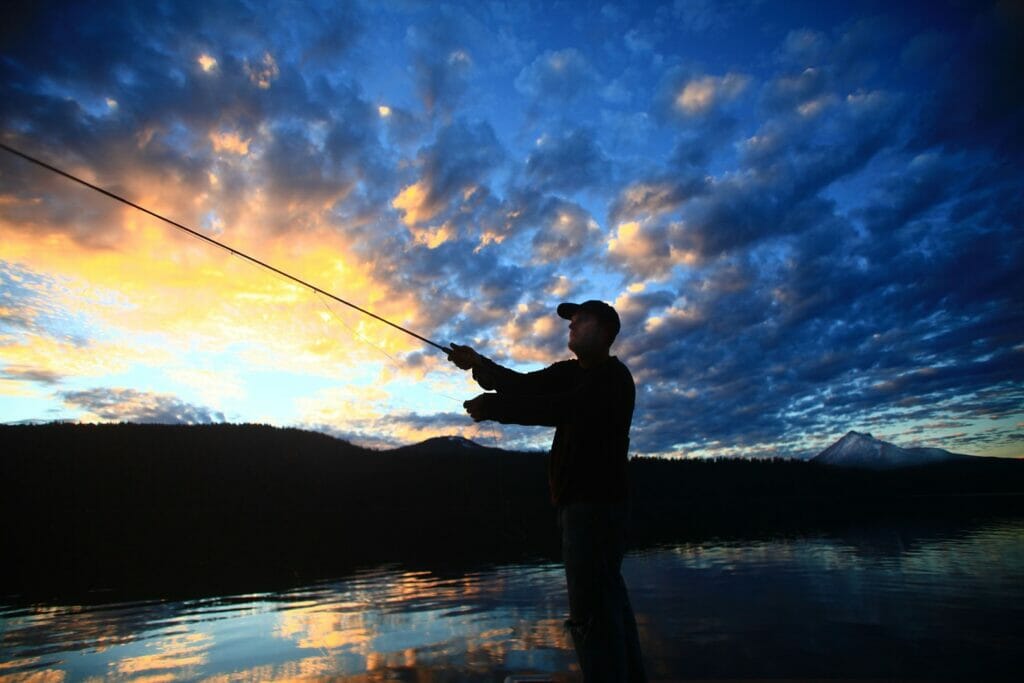
On the California side, the state has offered several options for different segments of the river, one of which is a complete closure until all restoration work in the project reach has been completed. TU’s position is that recovery of salmon and steelhead in the Klamath can be achieved while allowing angling under current rules for anadromous waters, catch-and-release with no take of salmon for the next 3-7 years. Johnson is working with longtime fish conservation partners, including CalTrout and the Northern California Council of Fly Fishers International, to support this policy.
More than twenty years of effort were required to move the idea of Klamath dam removal from unthinkable to yes. It will take only two years of site prep, road work, and heavy equipment operation to finish the job. TU’s planning, restoration and policy work in the Klamath basin aims to help the recovery of native salmon and steelhead, and the cultures and communities they support, stay on this faster track.



